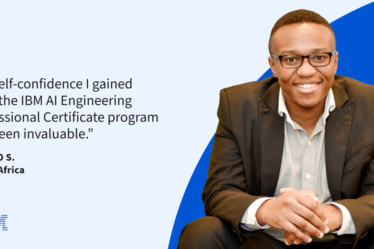
This is my last “In Real Life” column … for 2020. What should I explore?
I could share observations regarding how workplace learning changed this year. I already wrote that article for another publication. It’s not published yet. I reflect on points such as:
● L&D got aligned and focused on solving problems
● Reskilling became a timely business priority
● Mobile became the standard, and BYOD finally got past the red tape
● We have to fix measurement if we want to build value and agility
● The frontline is still getting left behind
I could do something similar to last December when I quipped about how much L&D reminds me of my favorite Christmas movie, It’s A Wonderful Life. I’m not in a particularly quippy mood right now.
I could pontificate about what L&D pros should do next year. Besides a clear need to focus on themes like agility, value, and simplicity, I can’t predict the exact challenges we’ll face over the coming months.
So what do I write about this time?
Sharing has been a huge part of my 2020. I’ve dedicated many of the hours I’d typically spend on airplanes, at conferences, and on client visits to creating content. When I wasn’t speaking with peers about the challenges they were facing or crafting solutions with my team, I was sharing stories, ideas, research, and proven practices with the community. I published 86 items (so far), including articles, videos, blogs, podcasts, and guides. I delivered 65 sessions and had the opportunity to engage digitally with a global audience in places like Australia, New Zealand, Singapore, Japan, China, and South Korea.
As I’ve reflected on all of this sharing, I’ve noticed a few questions that always come up. It doesn’t matter if I’m talking about artificial intelligence or frontline training tactics. So, for my last 2020 column, I’d like to answer the five most popular questions I get from readers, participants, listeners, and viewers.
1. Where can I get the slides?
They’re always published here.
2. How does INSERT TOPIC fit into this?
Adaptive learning. Social learning. Mobile learning. Workflow learning. Microlearning. They’re all part of a modern workplace learning ecosystem. We shouldn’t isolate topics into their own boxes or get overly concerned with what things are called. Instead, we should focus on common principles such as context, agility, simplicity, ubiquity, transparency, accessibility, and value that will help us get the right support to the right people at the right time.
3. How do I get my stakeholders to try something new like this?
Don’t approach it as a “learning strategy ». Learning is our thing. The people we support have problems they need to solve. They may recognize the importance of learning, but they don’t spend their nights and weekends researching the latest and greatest solutions. That’s what we do (or maybe it’s just me). Position your new learning idea as a practical solution to the problem about which stakeholders already care. Support your idea with case studies and examples from influential organizations who solved similar problems using this approach. It sometimes helps to bring in an external, credible expert to sell the idea—even if they are saying the exact same things as you. Show how you will validate the impact of your solution using the metrics by which they measure their operational value. Have a plan for how you will subsequently scale the concept once it proves to be a success, or iterate on it if you encounter challenges.
4. Does this work for soft skills?
Yes. It doesn’t matter if the skill is soft or hard, fluffy or rigid, gooey or impenetrable. A modern ecosystem should be capable of supporting everyone with whatever knowledge or skill they need to develop. Ditch the unnecessary qualifiers and focus on observable behaviors and measurable results. Some skills are harder to define but that doesn’t mean they require an entirely unique strategy. The one thing all skills have in common is the people who are just trying to do their best work.
5. How do I get my L&D team to think differently?
Learning transformation should begin within the learning team. However, this can mean a variety of different things to L&D pros. Change may be an exciting opportunity for people to do new and different kinds of work. Change may require people to learn new skills and leave old habits behind. Change may challenge people’s fundamental value because their role or tasks may be perceived as less important. Before you shove your team down a new path, consider how this evolution may impact them personally. Include them in the conversation early and encourage open and honest dialogue. Prioritize influence over compliance.
Check out The LearnGeek App if you’d like to read, watch or listen to anything I’ve shared this year.
That was my last “In Real Life” column … ever.
I started writing this column in April 2016 as a way to explore the practical side of workplace learning. “Theories are great, but this column is about what works in real life.” After 4.5 years and 56 entries, it’s time for a new focus. I based many of my favorite columns (including this one, this one, this one, and this one) on real-world stories of how I solved problems at different times in my career. These entries also seem to draw the strongest response from readers, including one that is being used in a college course. So, that’s where I’m going to focus moving forward.
I’ll see you in January for the first edition of “What I Learned.”
Be safe. Be well. Be kind to the frontline.


